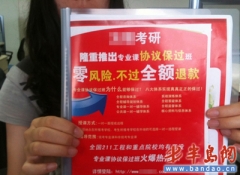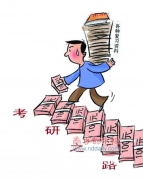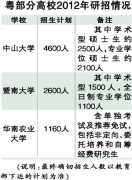|
||||
|
Consumer spending in Asia 亚洲消费状况 Shopaholics wanted 购物狂时代该来了? Jun 25th 2009 | HONG KONG From The Economist print edition Can Asians replace Americans as a driver of global growth? 亚洲人能够代替美国人做全球经济的发动机吗? ASIA'S emerging economies are bouncing back much more strongly than any others. While America's industrial production continued to slide in May, output in emerging Asia has regained its precrisis level (see chart 1). This is largely due to China; but although production in the region's smaller economies is still well down on a year ago, it is rebounding in those countries too. Taiwan's industrial output rose by an annualised 80% in the three months to May compared with the previous three months. JPMorgan estimates that emerging Asia's GDP has grown by an annualised 7% in the second quarter. 时下亚洲新兴经济体们的恢复势头比其他任何国家都要迅猛。在美国工业生产继续下 滑的5 月,亚洲新兴国家的产出已经回到了它们危机前的水平(见表一)。这很大程度 上要归功于中国,此外尽管该地区较小经济体的生产比去年仍有所下降,但最近这些 国家也在渐渐恢复。台湾截至5 月的工业产出年度化增长较前三个月上升了80%。 摩根大通预计二季度亚洲新兴经济体年度化增长率将达到7%。 Asia's ability to decouple from America reflects the fact that the region's downturn was caused only partly by the slump in American activity. In most Asian economies falling domestic demand was more important than the drop surge in food and energy prices in the first half of 2008 squeezed profits and spending power. Tighter monetary policy aimed at curbing inflation then further choked 亚洲与美国脱钩的能力说明该地区经济下滑只是部分由于美国经济活动的影响。大 多数亚洲经济体内需下降要比净出口下降对经济影响更大,这就解释了GDP 增长率 暴跌的原因。2008 年上半年食品和能源价格的暴涨让利润和消费能力双双缩减。 从紧的货币政策旨在遏制通胀却进一步使得内需受到抑制。 The recent recovery in industrial production reflects the end of destocking by manufacturers as well as the large fiscal stimulus by most governments. But the boost from both of these factors will fade. Meanwhile, export markets in developed economies are likely to remain weak. So the recovery in Asian economies will stumble unless domestic spending, notably consumption, perks up. 近期工业生产的回复显示制造商产品积压的状况正在结束,同时多国政府大规模经 济刺激计划也已起效。但是这些原因造成的增长终会消失,同时面向发达经济体的 出口市场看上去依旧疲软。因此除非让内需,尤其是让消费振作起来,否则亚洲经 济体的回复之路依旧前途坎坷。 Consumers' appetite to spend varies hugely across the region. In China, India and Indonesia spending has increased by annual rates of more than 5% during the global downturn. China's retail sales have soared by 15% over the past year. This overstates the true growth rate because it includes government purchases, but official household surveys suggest that real spending is growing at a still-impressive rate of 9%. In the year to May, sales and cars by a stunning 47%. 消费者消费的胃口在这一地区有着巨大的差异性。中国、印度和印尼在全球经济下滑 期间消费额年度化增长率超过了5%。中国的零售销售额去年暴增了15%,但这个数 字是被夸大的,因为它包括了政府采购的花销,但是官方的家庭调查显示真实的消费增 长率依然达到了令人印象深刻的9%。今年截至五月,家用电器销售增长12%,服装 销售增长22%而汽车销售增长则达到了惊人的47%。 Elsewhere in the region, spending has stumbled, squeezed by higher unemployment and lower wages. In Hong Kong, Singapore and South Korea real consumer spending was 4,5% lower in the first quarter than a year earlier, a much bigger drop than in America. But Frederic Neumann, an economist at HSBC, sees tentative signs that spending is picking up. Taiwan's retail sales rose in May for the third consecutive month. Department-store sales in South Korea rose by 5% in the year to May. 该地区其它地方由于受增高的失业率和工资水平下降的影响,消费增长步履蹒跚。 香港、新加坡和韩国一季度真实消费较去年下降了4-5%,这比美国的情况还要糟 糕。但是汇丰银行的经济学家弗雷德里希-纽曼认为,当下消费止跌上升的趋势已 初露端倪。台湾的零售业销售额到五月为止已连续3 月上升。韩国百货商场销售额 到五月为止也上升了5%。 It is often argued that emerging Asian economies have large current- account surpluses-and are thus not pulling their fair weight in the world-because consumers like to save rather than spend. Yet this does not really fit the facts. During the past five years consumer spending in emerging Asia has grown by an annual average of 6.5%, much faster than in any other part of the world. It is true that consumption has fallen as a share of GDP, but that is because investment and exports have grown even faster, not because spending has been weak. Relative to American consumer spending, Asian consumption has soared (see chart 2). 人们通常认为新兴亚洲经济体有着大量的国际收支经常项目顺差,而这却并不能使它 们在世界贸易中占有应有的比重,因为亚洲的消费者倾向储蓄多过消费。但这却并不 真正符合事实,在过去五年中崛起的亚洲国家消费年均增长率达到了6.5%,这要比 世界上任何其他地区都要快。消费占GDP 比重确实下降了,但这并不表明消费减弱 ,而是因为投资和出口增长的更快。与美国消费相比,亚洲消费是暴增了。 In most Asian economies, private consumption is 50-60% of GDP, which is not out of line with rates in countries at similar levels of income elsewhere. China, however, is an exception. Private consumption there fell from 46% of GDP in 2000 to only 35% last yearhalf that in America. In dollar terms, spending is only onesixth of that in America. (Singapore's consumption is also low, at just under 40% of GDP.) 在大多数亚洲经济体中,个人消费占GDP 的50-60%,这个数字并不比收入水平相 同的其他任何地方低。然而中国是个例外。个人消费占GDP 从2000 年的46%下降 到了去年的35%,这个数字才是美国的一半。以美元结算的话,消费只有美国的六 分之一。(新加坡的消费也很低,不足GDP 的40%) This explains why China's government has recently taken bolder action than others to boost consumption. Over the past six months the gove-rnment in Beijing has introduced a host of incentives to encourage house- holds to open vehicles and other goods such as televisions, refrigerators, computers and mobile phones; urban residents get a subsidy if they trade in cars and home appliances for new also been cut. There is huge potential for higher consumption in the cou-ntryside as incomes rise: only 30% of rural households have a refrigerator , for example, compared with 这也解释了中国政府为何最近比任何国家都大力促进消费。在过去6 个月中北京政府 颁布一揽子激励政策来鼓励家庭打开他们的钱包。农村居民得到了购买车辆和电视、 冰箱、电脑以及手机等商品的政策倾斜;城市居民则得到了购买汽车和家电换新方面 的政策倾斜;小排量汽车的税率也被下调。随着农村收入增加,消费上升有着巨大潜 力:与城市家庭近乎每家一台相比,只有30%的农村家庭拥有电冰箱。 The government has also introduced several measures this year to improve the social safety net, such as spending more on health care, pensions and payments to low-income households. On June 19th it ordered all stateowned firms that had listed on the stockmarket since 2005 to transfer 10% of their shares to the National Social Security Fund to shore up its assets. The shortterm impact is likely to be modest but if such measures ease households' worries about future pensions and health care, it could in the long term encourage them to save less and spend More. 政府也在今年颁布了几项举措改善社保网络,比如对医疗卫生领域加大投入、向低收 入家庭发放养老金和收入补助。6 月19 日还命令2005 年以来的国有上市公司向国 家社保基金转让10%的股份,以稳固后者资产。虽然看起来短期效果有限,但是如 果这一系列举措能够缓解家庭对未来养老金和医疗问题的担忧,长远的看还是能鼓励 人们存得更少花得更多的。 Another way to boost consumption is to make it easier to borrow. In most Asian economies household debt is less than 50% of GDP, compared with around 100% in many developed economies; in China and India it is less than 15%. South Korea is the big exception: households have as much debt relative to their income as Americans and their saving rate has fallen over the past decade from 18% of disposable income to only 4%. In many other Asian economies financing for consumer durables is virtually nonexistent. Promisingly, the Chinese bank regulator announced draft rules in May to allow domestic and foreign institutions to set up consumer-finance firms to offer personal loans for consumer -goods purchases. 另一个刺激消费的方法是让借贷更容易。多数亚洲国家家庭借贷不足GDP 的50% ,与此对比发达经济体这个数字在100%左右;在中国和印度则更是少于15%。 韩国却是个特例:与美国一样,家庭举债和他们收入一样多,储蓄率也已经在过 去十年中从可支配收入的18%下降到了只有4%。在其他亚洲经济体中面向耐用 消费品的金融服务事实上是不存在的。幸运的是,中国银监机构已经在5 月宣布 了一些规则草案,允许中外机构建立消费金融公司为消费者购买商品提供个人贷 款。 These measures are a modest step in the right direction. But a bigger test of Asian governments' resolve to shift the balance of growth from exports towards domestic spending is whether they will allow their exchange rates to rise. power and give firms reason to shift resources towards producing for the domestic market. But so far, policymakers have been reluctant to let currencies rise too fast. 这些措施只不过是正确方向上有限的一小步。但亚洲各国政府想要将增长平衡由出 口向内需转变的更大实验能否成功将取决于它们是否允许本国货币汇率上升。这种 再估价将会提升消费者的实际消费能力,并让企业有理由转移资源为国内市场生产 商品。但迄今为止,政策制定者们都不情愿让货币升值太快。 Asian spending is already an important engine of global growth. Even before the crisis, emerging Asia's consumer spending contributed slightly more (in absolute dollar terms) to the growth in global demand than did America's. But it could be even bigger if Asians enjoyed the full fruits of their hard labour, rather than subsidising Western consumers through undervalued currencies. It is time for an even greater shift in spending power from the West to the East. 亚洲的消费已经是世界经济增长的重要引擎。甚至在危机之前,亚洲新兴经济 体的消费者对全球经济增长的贡献也要比美国消费者稍大一点点(在完全以美 元作为结算单位的前提下)。而如果亚洲人能够充分享用他们辛勤劳动的果实, 而不是通过低估本国货币补贴西方消费者的话,这种作用将会更明显。现在是 将消费能力从西向东做更大转移的时候了。 |
| [发布者:dongdong] | |||
|
 当前位置:
当前位置:










